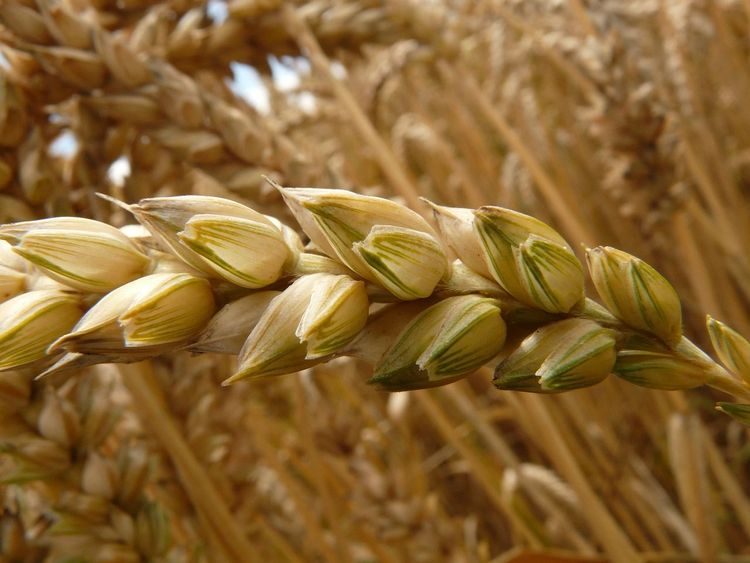Gain Actionable Insight Into Climate Impacts With The Gro Climate Ensemble
Agricultural land, along with the businesses that depend on it, is facing unprecedented risk due to increasing extreme weather as a result of climate change and ever-increasing demand on critical natural resources. Agricultural land and business investors, lenders, and insurers require a new generation of tools to effectively navigate these risks and adjust their business strategies, pricing expectations, and approaches to climate impacts.
Gro Intelligence has developed a comprehensive climate data analytics platform built by a team of leading experts in climatology, meteorology, and agronomy, which has been scaled through AI to provide global coverage with precision down to the district, or county, level. The Gro climate platform is composed of an ensemble of climate models designed to provide insights into the potential future impact of various climate change scenarios on the food supply chain, agricultural and hard assets, pricing and trade, and more.
The foundation of Gro’s climate ensemble is a group of eleven climate models that are curated from the Coupled Model Intercomparison Project, Phase 6 (CMIP6), the core suite of climate change simulations underpinning the recent 6th Assessment Report of the Intergovernmental Panel on Climate Change (IPCC).
What is CMIP6?
CMIP6 is an initiative through which many global climate science labs coordinate their modeling efforts to produce a collection of harmonized sets of climate experiments and simulations. The CMIP6 models are a key information source for IPCC reports, including the IPCC sixth assessment report (AR6) which features “climate forecasts that reflect the collective knowledge of the world’s top climate research.” CMIP6 represents the state-of-the-art of climate projections.
What is the difference between CMIP6 and CMIP5?
CMIP5 was featured in the IPCC Fifth Assessment Report (AR5) in 2013. CMIP6, the most recent of the CMIP experiments , represents improved physics, higher resolution, consideration of more physical processes, and the use of up-to-date scenarios and models.
CMIP6 is a substantial expansion over CMIP5, specifically in the number of models and future scenarios considered. This includes additional “no climate policy” scenarios which equate to potential worst case warming pathways not previously examined by CMIP5. It also includes an added “optimistic” scenario. In these “business as usual” scenarios, greenhouse gas emissions continue to increase unabated, providing modelers with a stronger baseline of comparison for climate mitigation policy outcomes. In addition, unlike CMIP5, CMIP6 includes socio-economic narratives associated with each scenario.
Where does Gro showcase CMIP6 data?
Gro uses CMIP6 data in hundreds of data series showing projections out to the end of the century based on 5 different scenarios from the Shared Socioeconomic Pathways (SSP) considered in the IPCC report. These include best-case, worst-case, and several middle-of-the-road scenarios for Gro data series that display trends for temperature, precipitation, fire weather, sea level rise, and water stress, for example. These are available in the Gro portal, Gro Navigator, and Gro API.
Below are two potential use case scenarios for Gro climate data.
Example 1: A food supply business wants to quantify future climate risk for ingredients that are critical for the long term health of the company. As South American soybeans are a common ingredient in many of the company’s products, the owners want to determine if more frequent flooding of soybean fields will pinch future production. The Gro Climate Risk Navigator, weighted by soybeans in South America, projects the change in heavy precipitation through the end of the century. Moreover, out of the handful of very rainy days every year, how much “rainier” will these days become?
Both the “middle-of-the-road” SSP2-4.5 and “medium-to-high” SSP3-7.0 warming scenarios show increases in heavy precipitation by 2050, but especially by 2100, which would lead to a potential reduction in soybean yield over time. Therefore, the owners of this business may have to be less reliant on soybeans over the next 25 to 75 years.
Example 2: A business with interests in red wine sourced from California grapes wants to know if grape quality will be impacted by increasing temperatures over the next 25 years. Specifically, how much will the number of excessively hot days increase?
Using a 5-year rolling mean, the Climate Risk Navigator Weighted by Red Wine Grapes shows the projected number of days per year that will exceed 35 degrees Celsius over this century. The “middle-of-the-road” warming scenario, SSP2-4.5, shows the number of days increases from 15.6 days in 2024 to 22.6 days by 2050. In the “worst-case-scenario”, SSP5-8.5, the number of days increases from 14.9 days in 2024 to 28.4 days in 2050. Because of this analysis, this business can factor in this potential effect on grape quality in their investment strategy.
Why is Gro’s Climate Ensemble Valuable?
Gro’s state-of-the-art climate ensemble is based on the most recent global climate model intercomparison project. It provides in-depth analysis, including consistent land-use and economic scenarios. Users can monitor potential changes in the valuation of proprietary assets over time given the variable magnitude of climate impacts.
Gro digs through massive amounts of data
The IPCC uses an ensemble composed of more than 50 climate models from labs around the world. Each of these models has separate variants, or versions, equating to thousands of potential combinations of model projections, which Gro’s climate team and data scientists have spent countless hours curating.
Model diversity strengthens overall quality
From this large collection of models, Gro’s team of scientists have carefully selected 11 models for the Gro Climate Ensemble. The criteria to qualify for the “final 11” was based on both data completeness and the degree of model independence, which is why the “final 11” each come from separate institutions representing 8 countries. Finally, this curation takes into account the reputation of each model, ensuring that the overall spread of the CMIP6 experiment is well represented.
Powerful use cases
Gro’s team uses a variety of physical variables, including temperature and precipitation, to compose the Gro Climate Ensemble. These data are aggregated to over 46,000 global districts and are used to address important questions for specific parts of the world such as: How many more days of extreme heat and precipitation will there be by the end of the century?
Transparency in uncertainty
It’s critical to see how much uncertainty is in each projection. As part of Gro’s Climate Ensemble, we provide an ensemble standard deviation across our metrics to quantify parametric and structural uncertainty.
Bias correction
Climate models often have biases in data projections. That's why Gro's team bias-corrects the CMIP6 data in Gro's Climate Ensemble. We do this by constraining climate model simulations of historical climate with observations.
Responsible downscaling
In their original form, CMIP6 data have coarse horizontal resolution of 100 km x 100 km or higher. This can miss important temperature or precipitation gradients in areas with high variability like the Rocky Mountains. To correct for this, Gro statistically downscales the data based on a peer-reviewed and well documented methodology, to a resolution of 25 km based on historical climate data, striking a balance between their original coarse resolution and providing localized climate change information at a useful scale.
Conclusion
The foundation of Gro’s climate analytics platform is a highly-curated set of models that frame the most likely potential climate scenarios given the current trajectory of global greenhouse gas emissions and government policy. The models have been scaled for optimal usability by individual land and business investors, lenders and insurers to determine the risk profile of their assets and to effectively navigate changing conditions in both the short and long term.
For more information on Gro’s climate ensemble, please contact us today!
 Insight
InsightPrices Surge for Cocoa, Coffee, and Other ‘Soft’ Commodities
 Insight
InsightGro’s 2024 Watchlist: 3 Forces Shaping Global Climate Risk in the Year Ahead
 Insight
InsightUS Cotton Acreage Will Jump in 2024, Gro Predicts
 Insight
Insight

 Search
Search